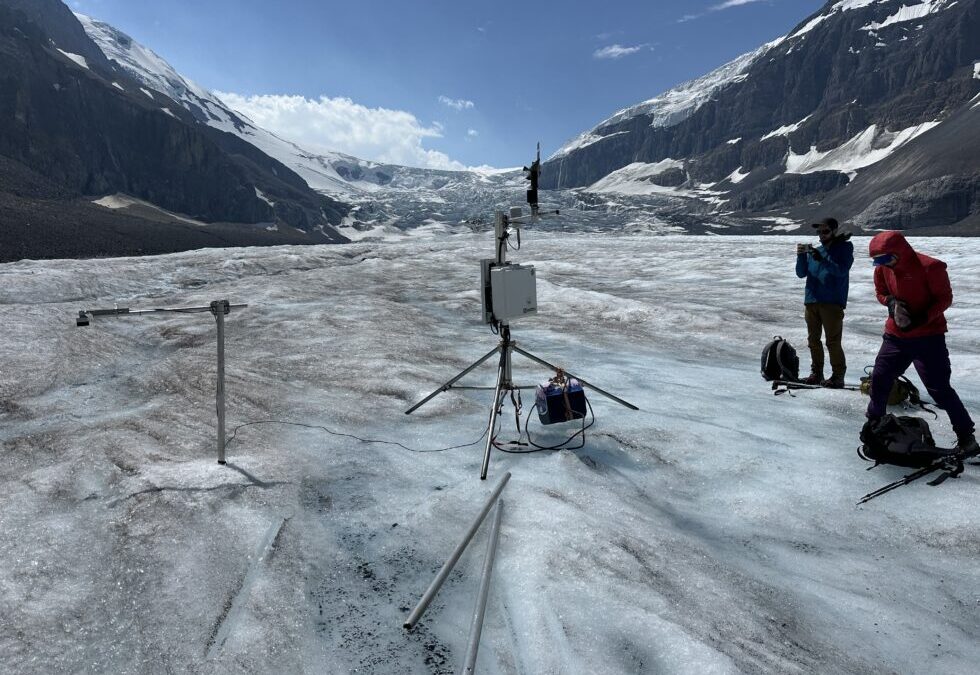Recent events in Jasper, Canada, including wildfire activity, wildfire smoke, fire evacuations, and fire data smoke plumes, have become a stark indicator of the climate emergency we face, according to prominent Canadian scientists. The area’s devastating wildfires serve as a harbinger of the extreme weather conditions that are becoming increasingly common across the globe.
Warning Signs from Jasper’s Wildfires
John Pomeroy, the director of Global Water Futures at the University of Saskatchewan, points to a combination of factors that set the stage for the Jasper wildfires, including the extreme heat and critically low soil moisture. These factors have similarly contributed to past fires in Fort McMurray, Kelowna, Lytton, and the Shuswap region.
Glacial Darkening: The Impact of Fires on Ice
Scientists, including Pomeroy, have noted the darkening of glaciers in Jasper and Banff national parks due to soot and ash from the wildfires. This darkening accelerates the melting of glaciers, as observed by Pomeroy during his visit to the Bow Glacier.
The alarming levels of soot and ash deposits from fires, combined with algae, have led him to predict the imminent disappearance of the Peyto Glacier within the decade, with the Athabasca Glacier possibly enduring a few decades longer.
Record-Breaking Heat and Its Consequences
With the Earth’s temperature reaching unprecedented levels, the hottest day on record was surpassed twice in a single week.
The severity of this heat, posing a high fire risk and increasing the likelihood of wildfire, was illustrated on July 21, which was then followed by an even hotter day shortly after. Pomeroy, speaking from Canmore, expressed his concern that the wildfires in Jasper are a manifestation of the effects of such extreme temperatures.
Glacier Melt and River Flows
The North Saskatchewan and Athabasca Rivers are experiencing higher-than-normal flows due to the excessive melting of glaciers. Pomeroy’s observations at the Athabasca Glacier Station revealed a dramatic reduction in ice depth, with the sensor now four meters above ground level due to significant melting since mid-September 2023.
The weekly melt rates of the Athabasca Glacier have been alarmingly high, though not record-breaking for the season.
Contributing Factors to the Wildfire Crisis
The crisis in Jasper is exacerbated by factors such as the overly mature forests and the swathes of lodgepole pine decimated by the mountain pine beetle, which has thrived in the warmer winters—a direct result of climate change, leading to a high fire risk and increasing the likelihood of wildfire. Pomeroy emphasized the significant impact of the beetle infestation over the past 14 years, worsened by the lack of cold winters.
The Interconnectedness of Climate Events
Pomeroy stresses the interconnected nature of glacier retreat, wildfires, drought, and water supply issues. He points to the extreme heat and fire of recent summers as a key factor in these environmental challenges and underscores the importance of land management in addressing them.
The Urgency of Carbon Reduction
For years, scientists have been emphasizing the critical need to reduce atmospheric carbon. Pomeroy suggests that it may take the devastation of a national treasure like Jasper by fire for both citizens and governments to fully grasp the consequences of inaction. He likens the current situation to being in a war, given the severity of the unfolding disaster.
Future Concerns
Many experts agree that the wildfires in Jasper are a clear signal of the urgent climate issues facing our planet. The combination of extreme heat, fire, beetle infestations, and rapid glacial melt are symptoms of a larger environmental crisis that demands immediate attention and action. As the evidence mounts, the call for decisive measures to combat climate change becomes increasingly imperative.
About John Pomeroy
John Pomeroy is a distinguished academic and researcher specializing in hydrology, the study of water on Earth. As the director of Global Water Futures at the University of Saskatchewan, he leads Canada’s most extensive university-led research project aimed at addressing the challenges facing the country’s water resources in the face of climate change and other environmental pressures. His work is pivotal in understanding how changes in snowpack, glaciers, and rainfall patterns affect water supply and quality, which in turn has significant implications for ecosystems, agriculture, and community water security.
Pomeroy’s work on the Jasper wildfires, as highlighted, underscores his broader interest in how extreme weather events, influenced by climate change, impact water systems and subsequently, wildfire risks.
